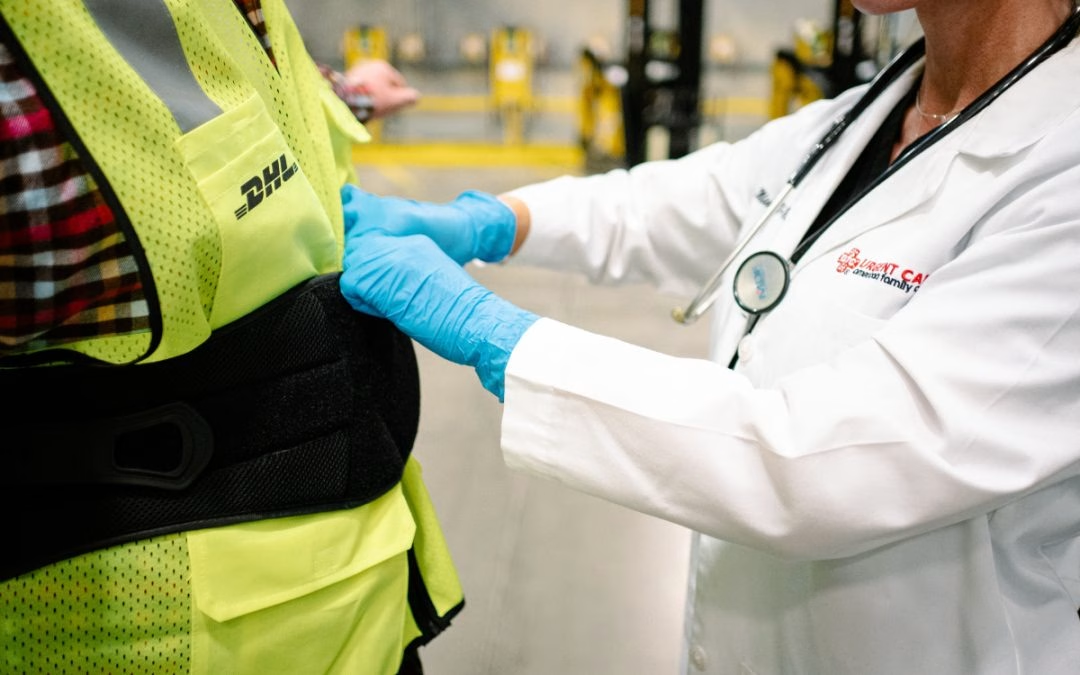by | Apr 28, 2024 | Emergency Clinic

A typical comedic scenario involves a character stepping on a rake and getting whacked in the face by the handle. It’s funny until it happens to you—or something similar, like tripping and slamming your face into a door frame. Now, you’re contemplating creative stories to explain your injury, perhaps claiming you’re learning to box, rather than admitting to a moment of clumsiness.
You’re in good company. Each year, nearly 50,000 people in the U.S. suffer from fractured noses. Nasal fractures make up 40-50% of all facial fractures, not surprising given the prominence of the nose.
Recognizing a Broken Nose
The nose’s bridge is bony, while the septum, which divides the nostrils, is cartilaginous. A fracture can occur in either part. Signs that your nose might be broken include:
- Facial Swelling: This is often the first noticeable sign.
- Nosebleeds: Bleeding from the nostrils is common.
- Blocked Nasal Passages: Difficulty breathing through your nose.
- Deformed Nose Bridge: A visible crookedness or bump.
- Tenderness and Bruising: Pain and bruising around the nose and eyes, sometimes resulting in “black eyes.”
- Pain on Touch: Significant pain when touching the nose.
- Crunching Sound: A crackling or crunching noise when touching the nose.
- Mucus Discharge: An unusual discharge from the nostrils.
The severity of these symptoms can vary. It’s essential to have a doctor assess the injury. They can manage pain, prevent infection, and determine the extent of the damage. If the nose is misaligned, you’ll likely be referred to an ear, nose, and throat specialist (ENT), who has the expertise to handle nasal fractures.
Preparing for Your Doctor’s Visit
When seeing your doctor, be ready to:
- Describe how the injury happened.
- List all your current medications and supplements.
- Bring a photo of yourself before the injury for comparison.
Treatment Options for a Broken Nose
X-rays are about 80% effective at detecting nasal fractures, but physical exams often suffice without exposing patients to radiation. In severe cases, a CT scan might be necessary to check for additional facial bone injuries.
Nasal fractures are classified into two types: displaced and non-displaced.
Non-Displaced Fractures
These are simpler to manage. Treatment involves:
- Icing: Apply ice to reduce swelling.
- Pain Medication: Over-the-counter pain relievers can help.
- Comfort Measures: Keep the head elevated and avoid pressure on the nose.
Displaced Fractures
If the nose is broken in multiple places, realignment is required. This might involve:
- Manual Adjustment: The doctor might use special instruments to realign the nose.
- Surgical Intervention: A procedure known as ‘closed nasal reduction’ might be necessary, ideally within 14 days of the injury. Performed under general anesthesia, this involves rebreaking and realigning the nose, followed by applying a splint to maintain alignment during healing.
Potential Complications
- Septal Hematoma: Blood pooling that requires drainage to prevent infection.
- Septal Perforation: A hole in the septum that can lead to the collapse of the nasal bridge.
Dos and Don’ts for a Broken Nose
Dos
- Ice Regularly: Apply ice four times a day for 10-15 minutes each during the first 48 hours. Use a cloth to protect the skin.
- Minimize Pressure: Avoid putting pressure on your nose.
- Elevate Your Head: Use extra pillows while sleeping.
- Use Pain Relievers: Over-the-counter options can help manage pain.
Don’ts
- Don’t Self-Treat: Avoid trying to straighten your nose.
- Avoid Glasses: Don’t wear glasses unless necessary.
- Refrain from Picking or Blowing Your Nose: Let it heal.
- Limit Exercise: Avoid strenuous activity for a couple of weeks.
- Skip Contact Sports: Stay away from sports for at least six weeks to prevent further injury.
When to Call Your Doctor
Seek medical attention if:
- You develop a high fever.
- Pain persists despite medication.
- Swelling doesn’t subside after three days.
- Your nose remains crooked.
- Breathing difficulties persist post-swelling.
- Persistent nosebleeds occur.
- You experience a new salty or metallic taste in your mouth.
While a broken nose isn’t always a medical emergency, timely medical care is crucial to prevent complications like infections or long-term issues such as deformities or breathing problems. And remember, keep your living space free of potential tripping hazards!


